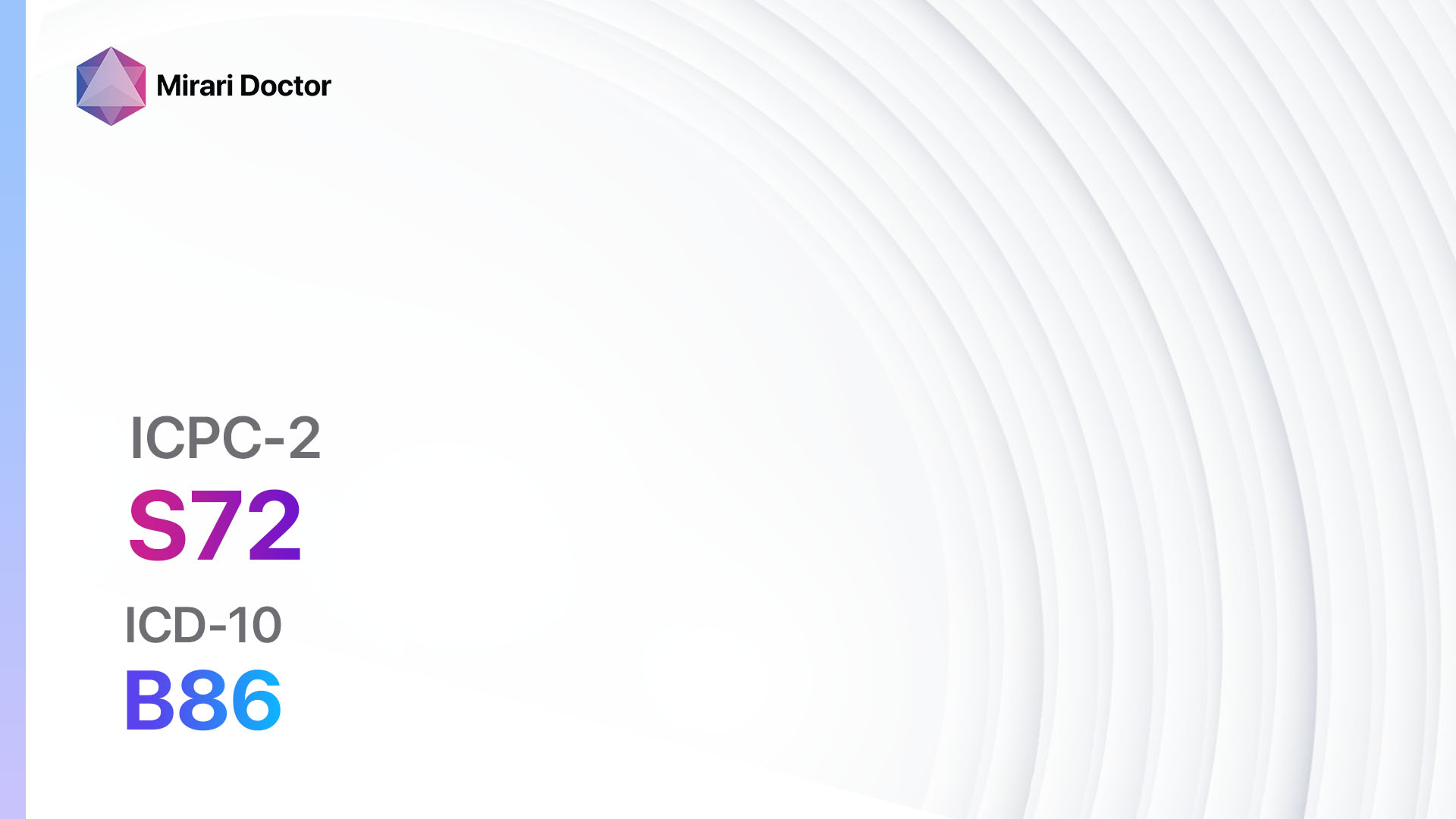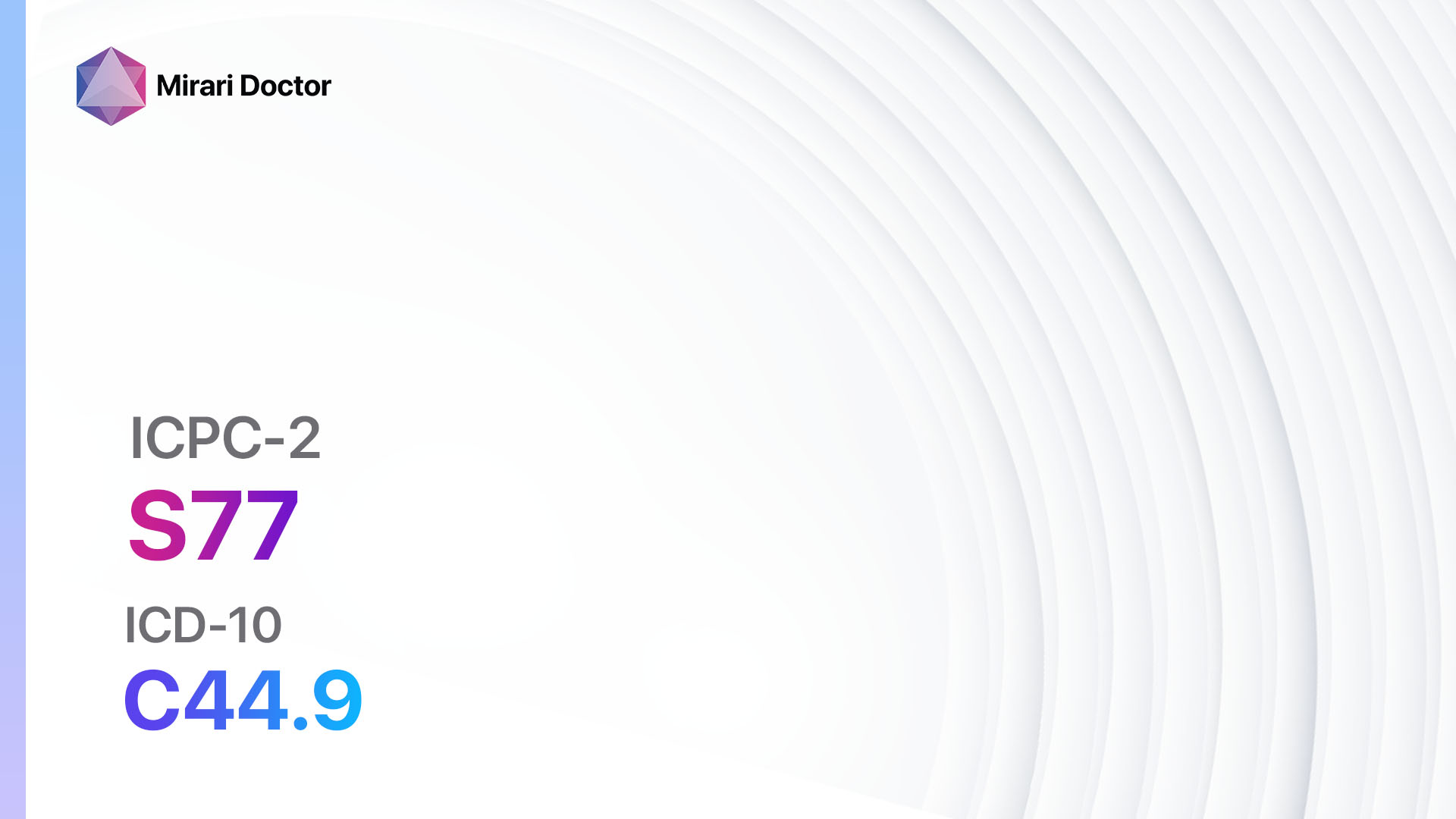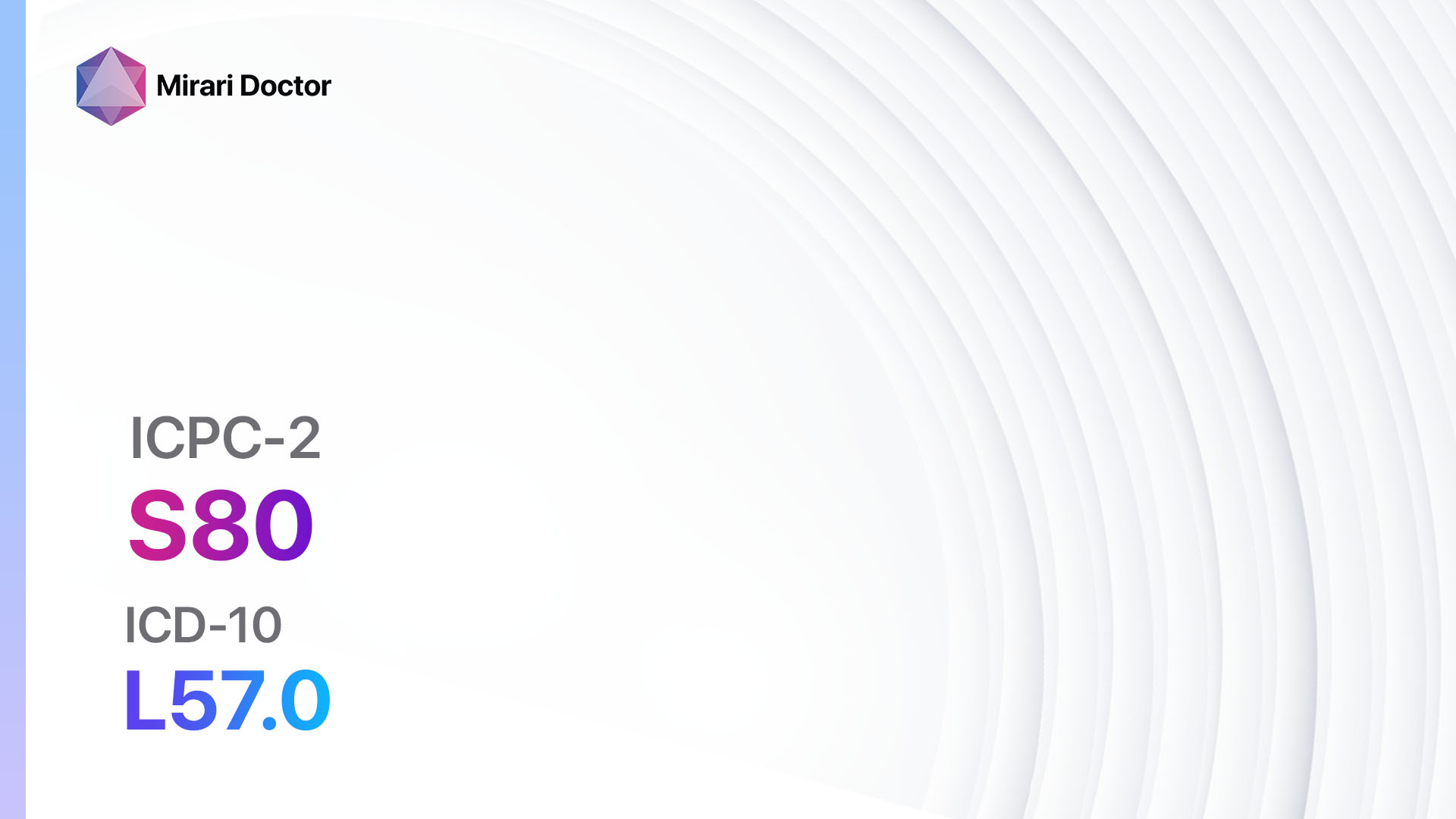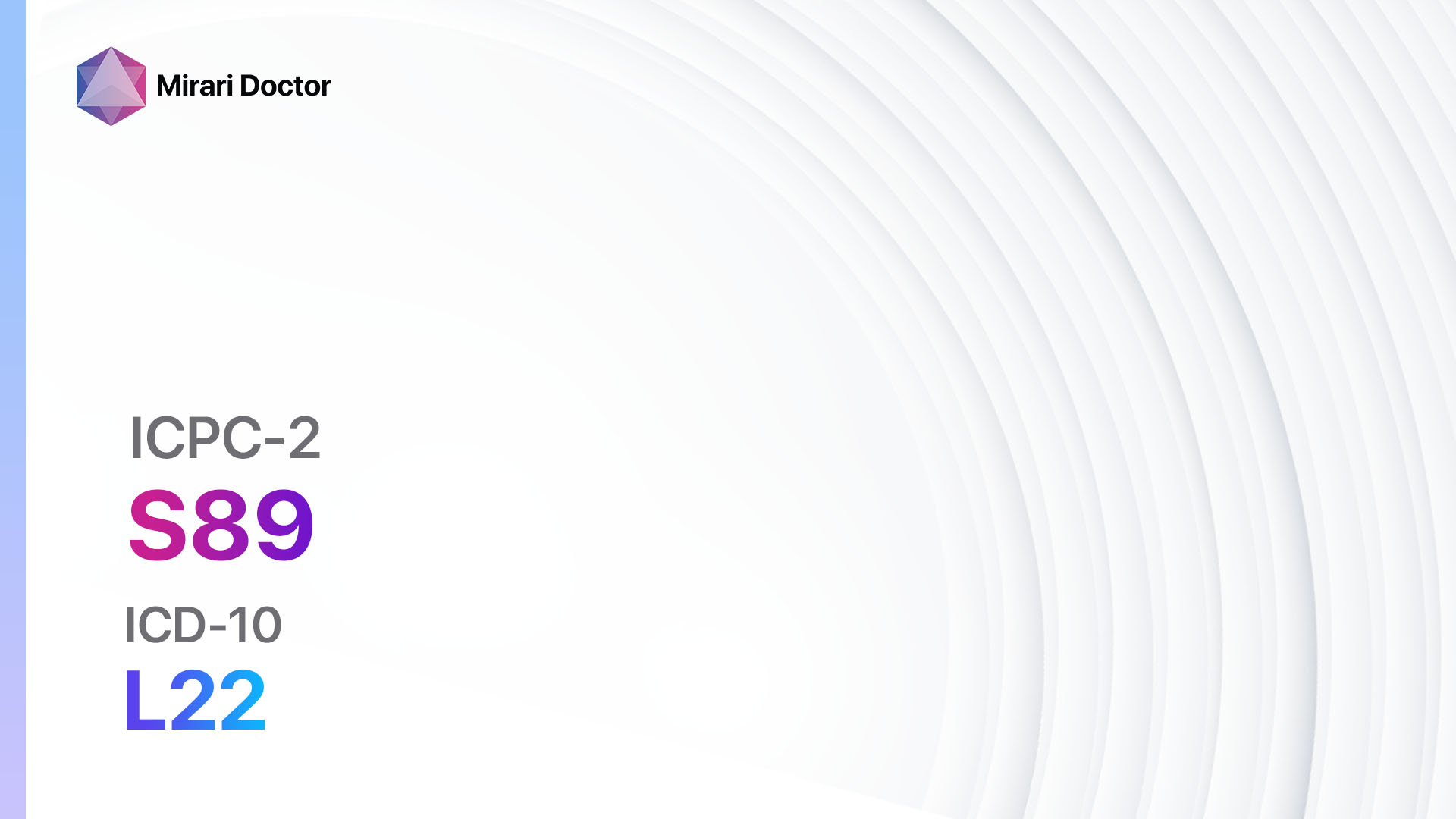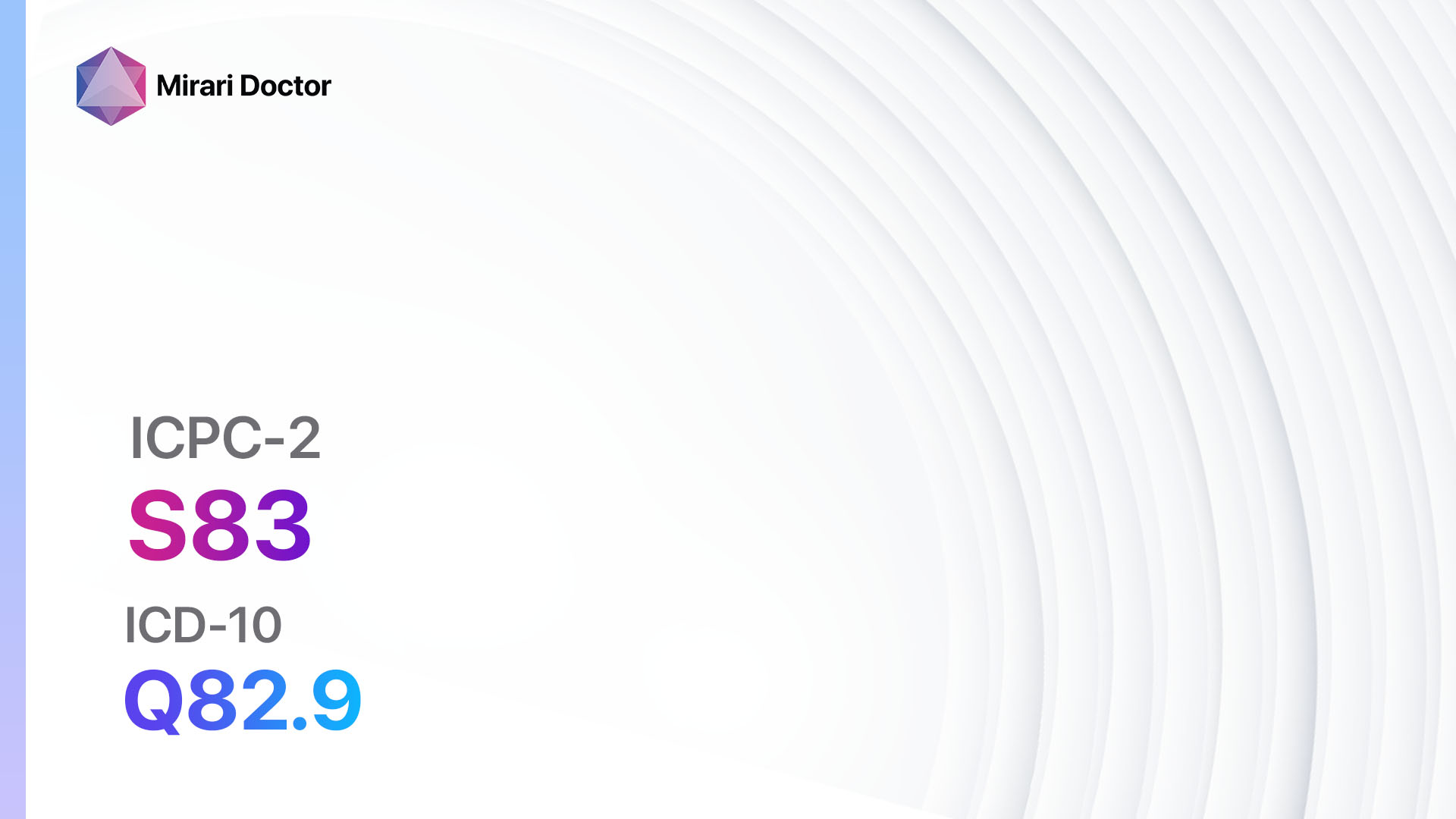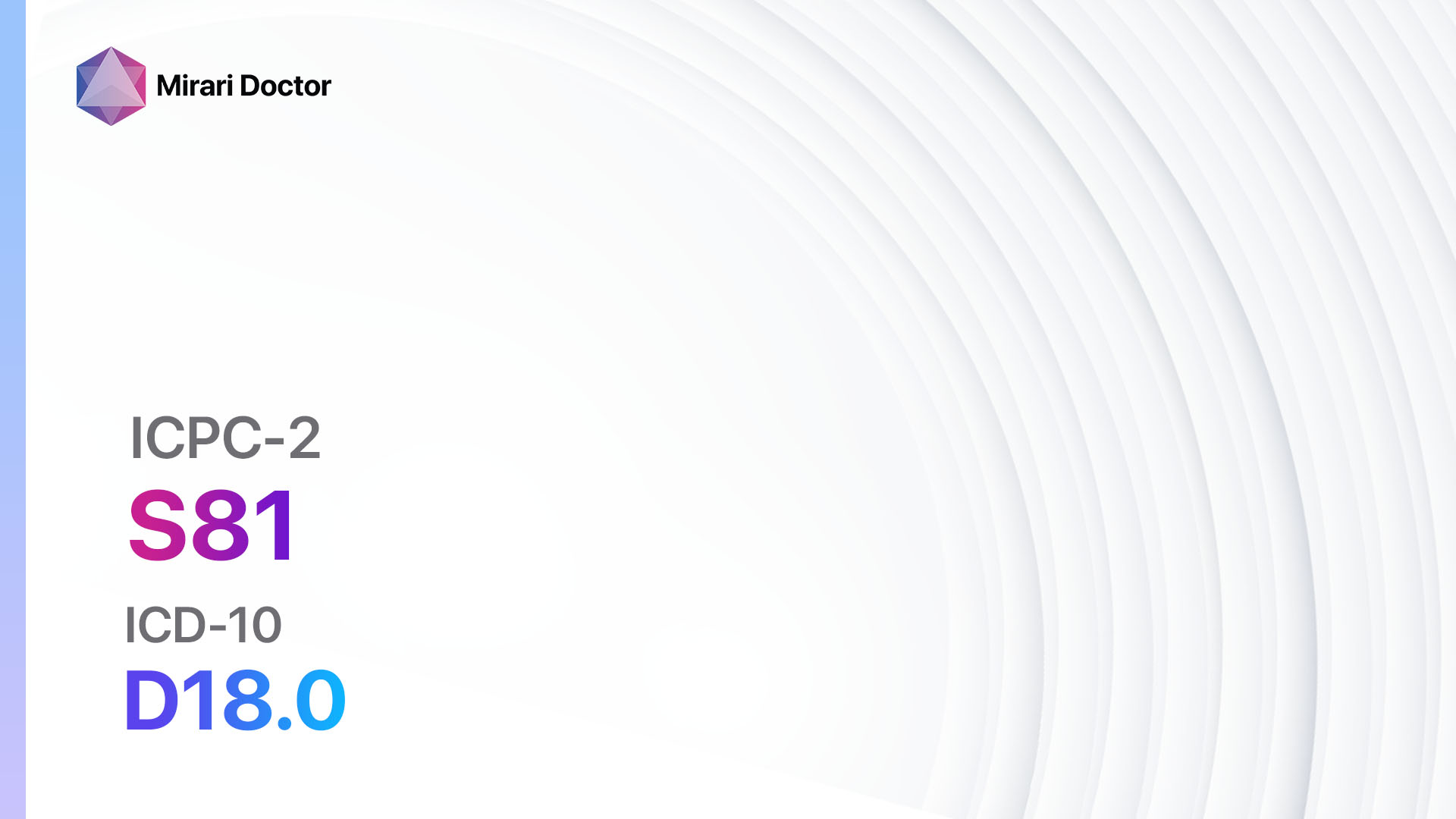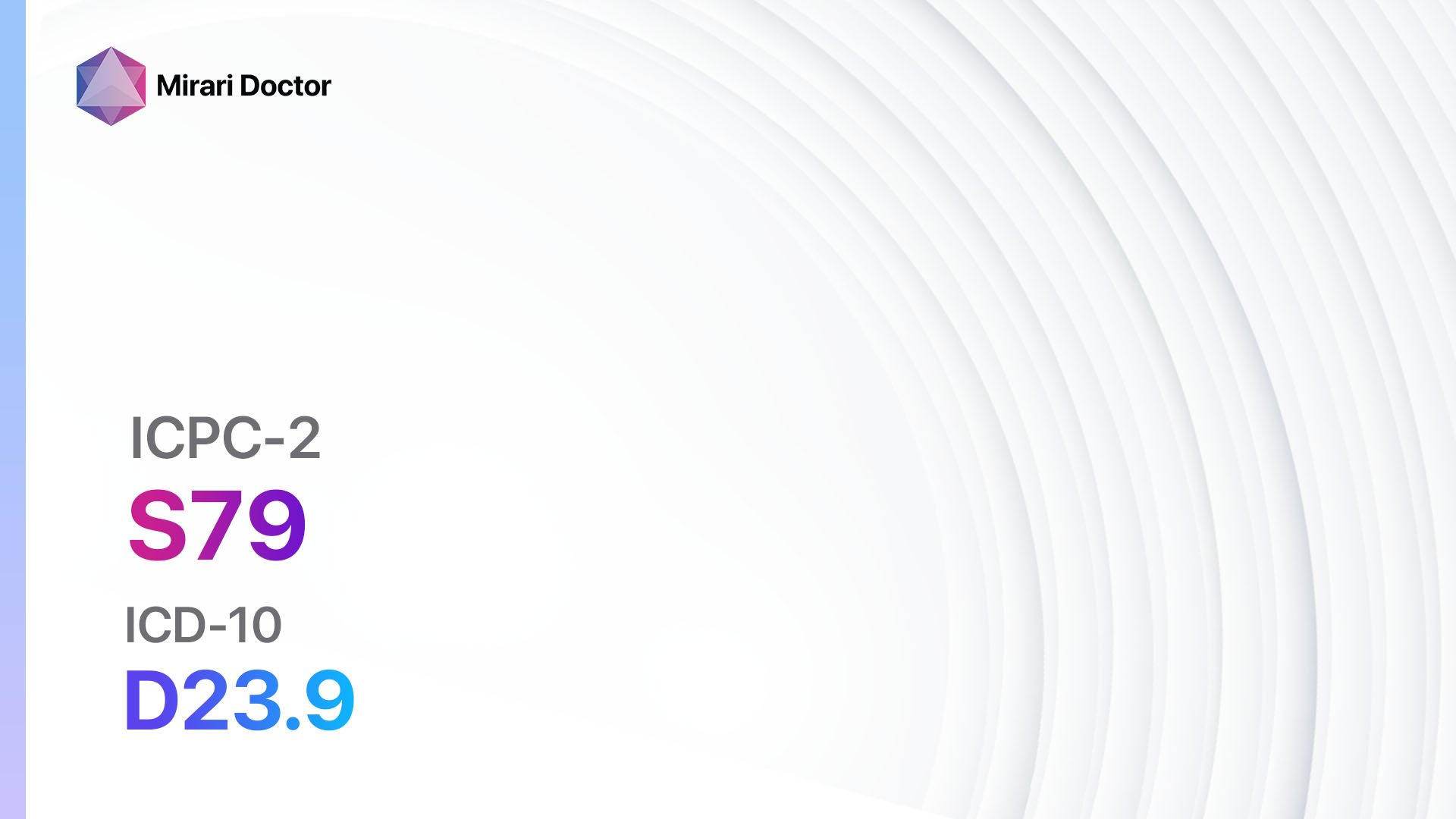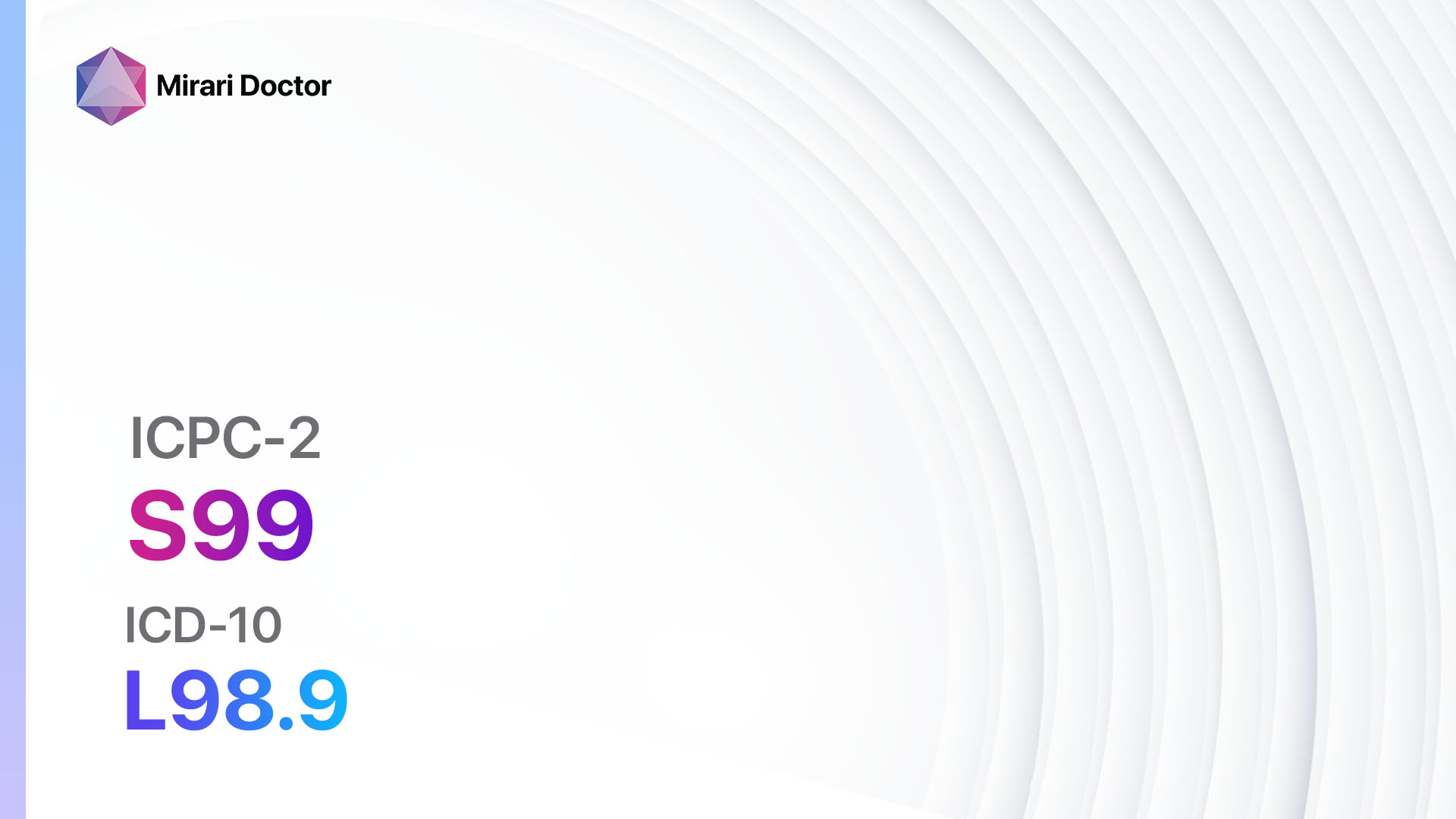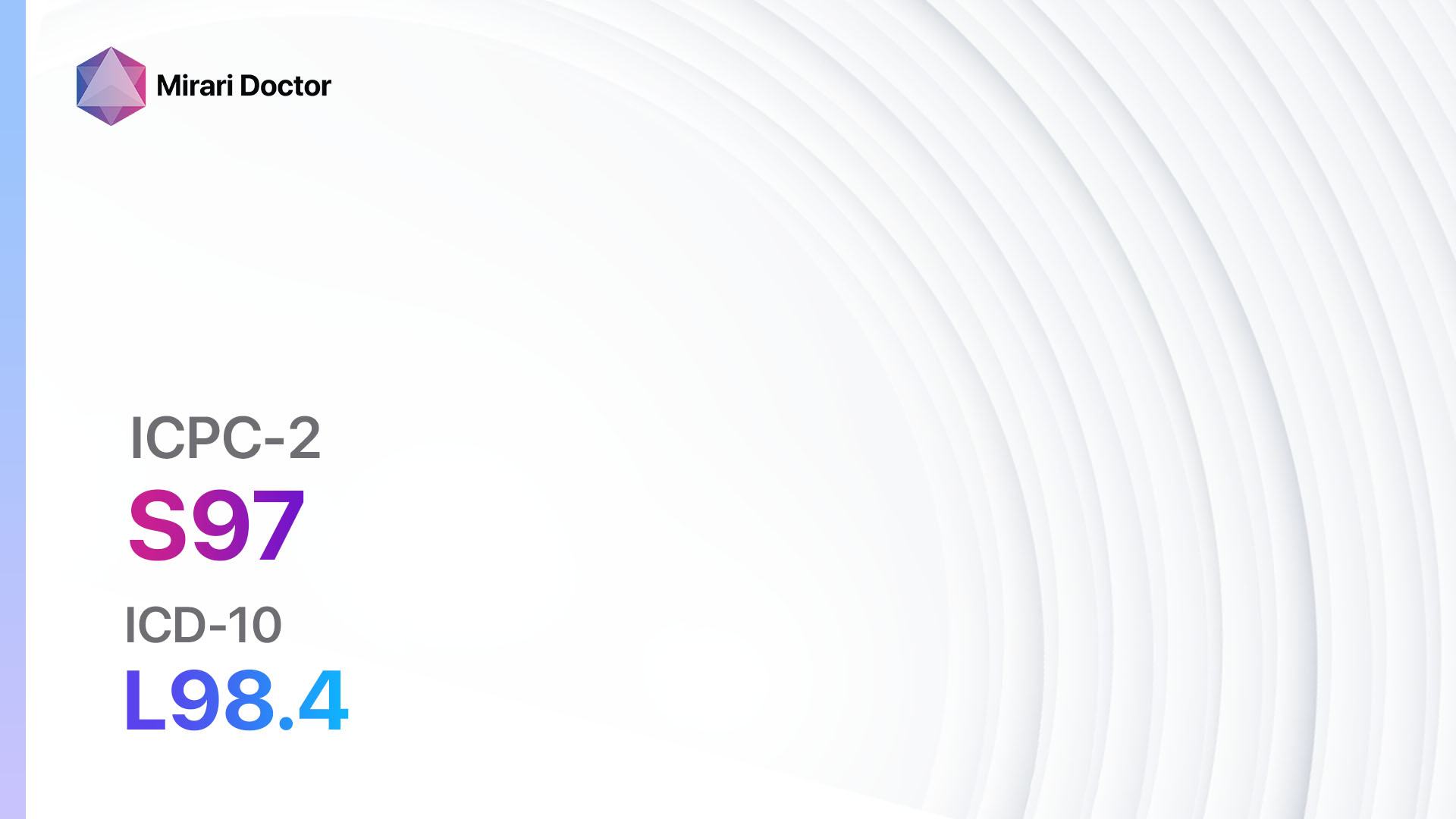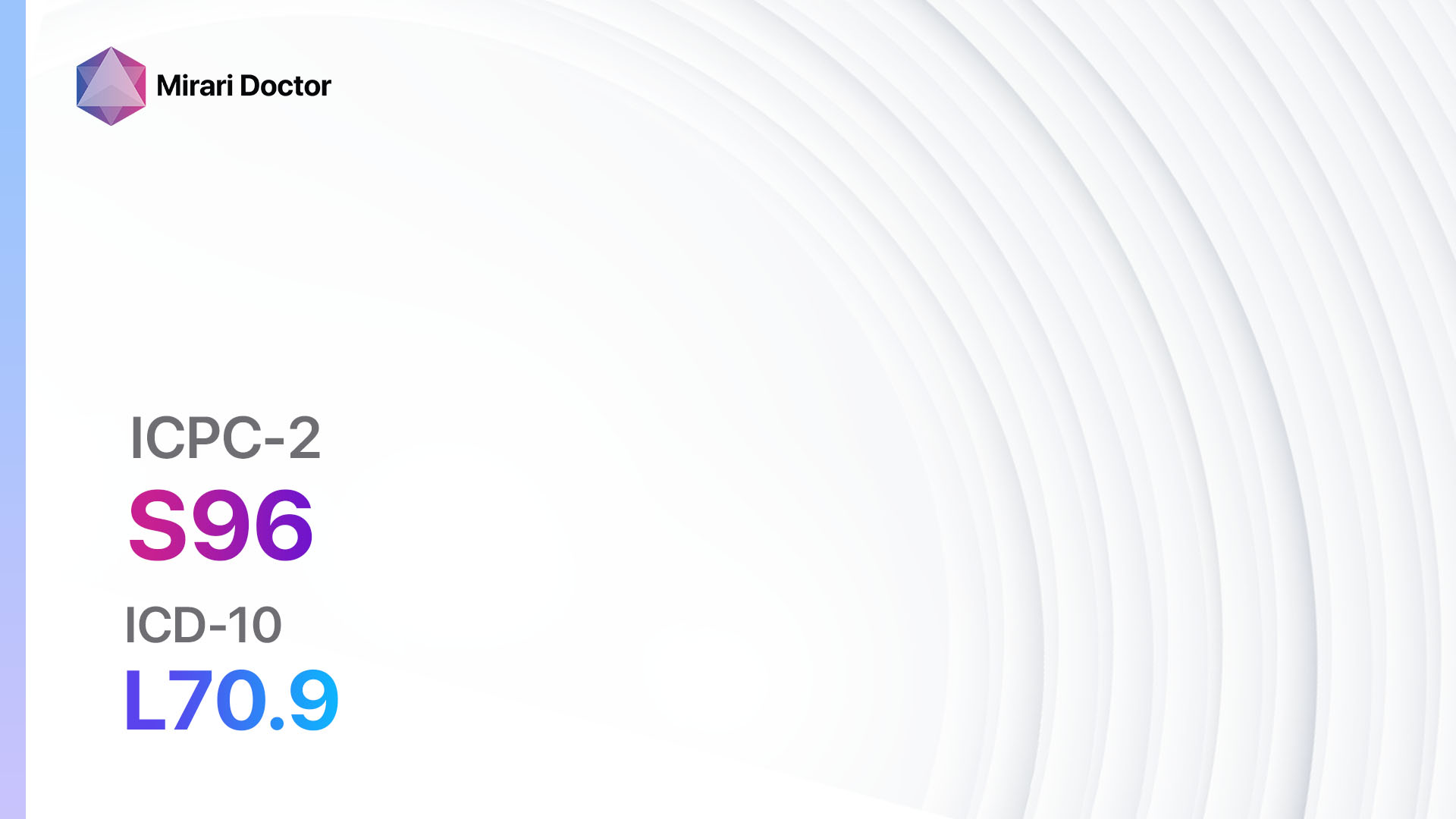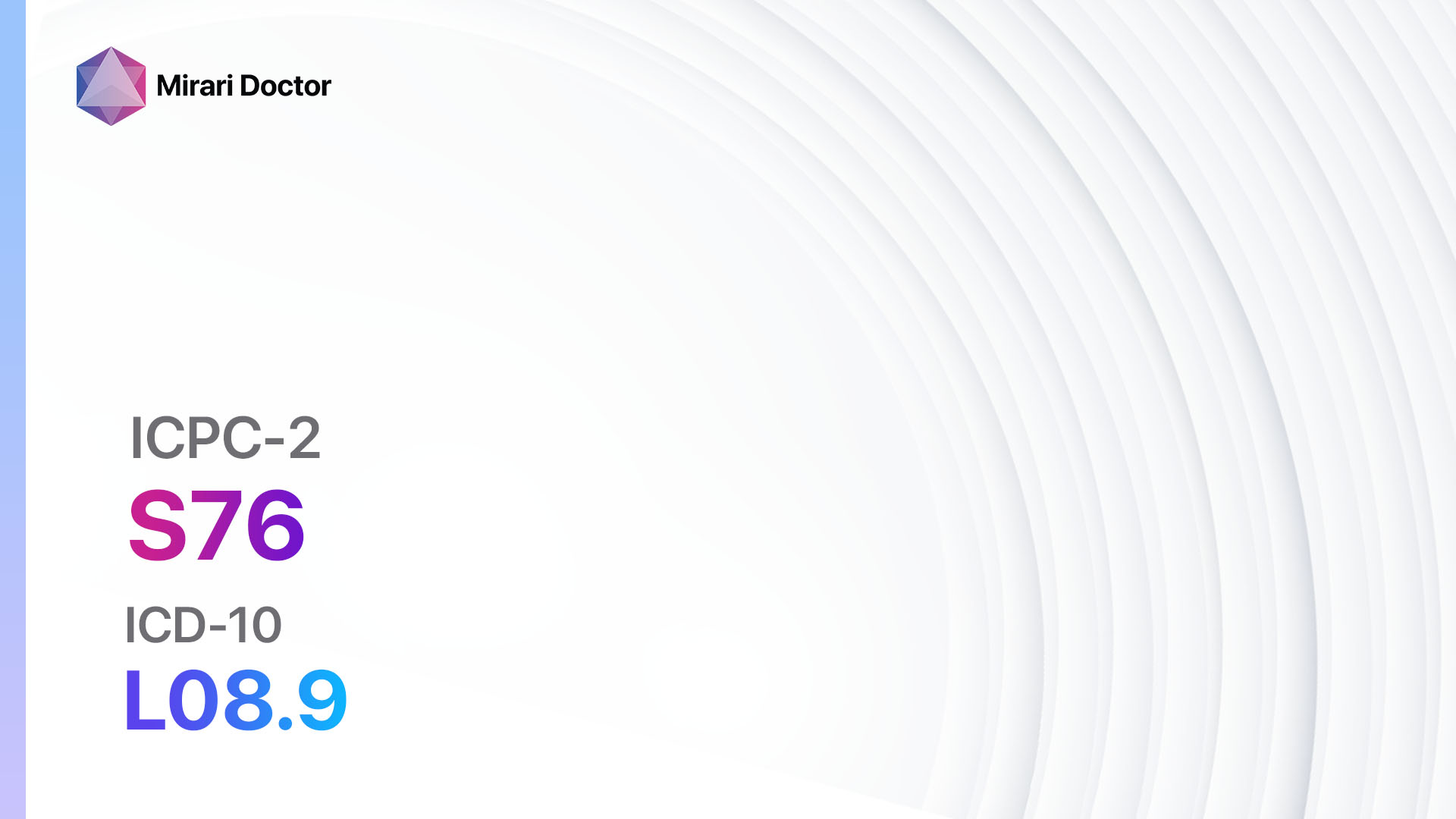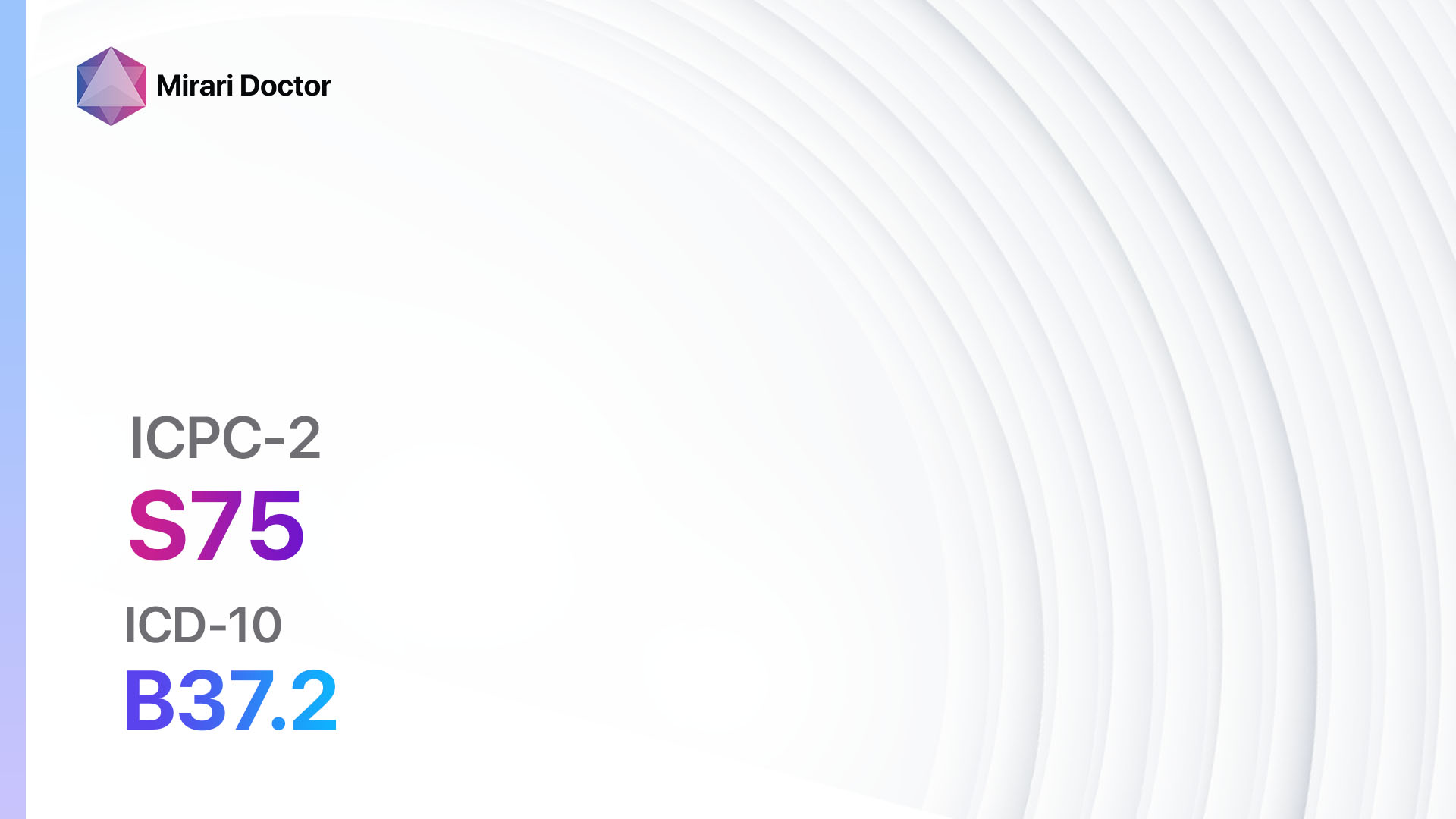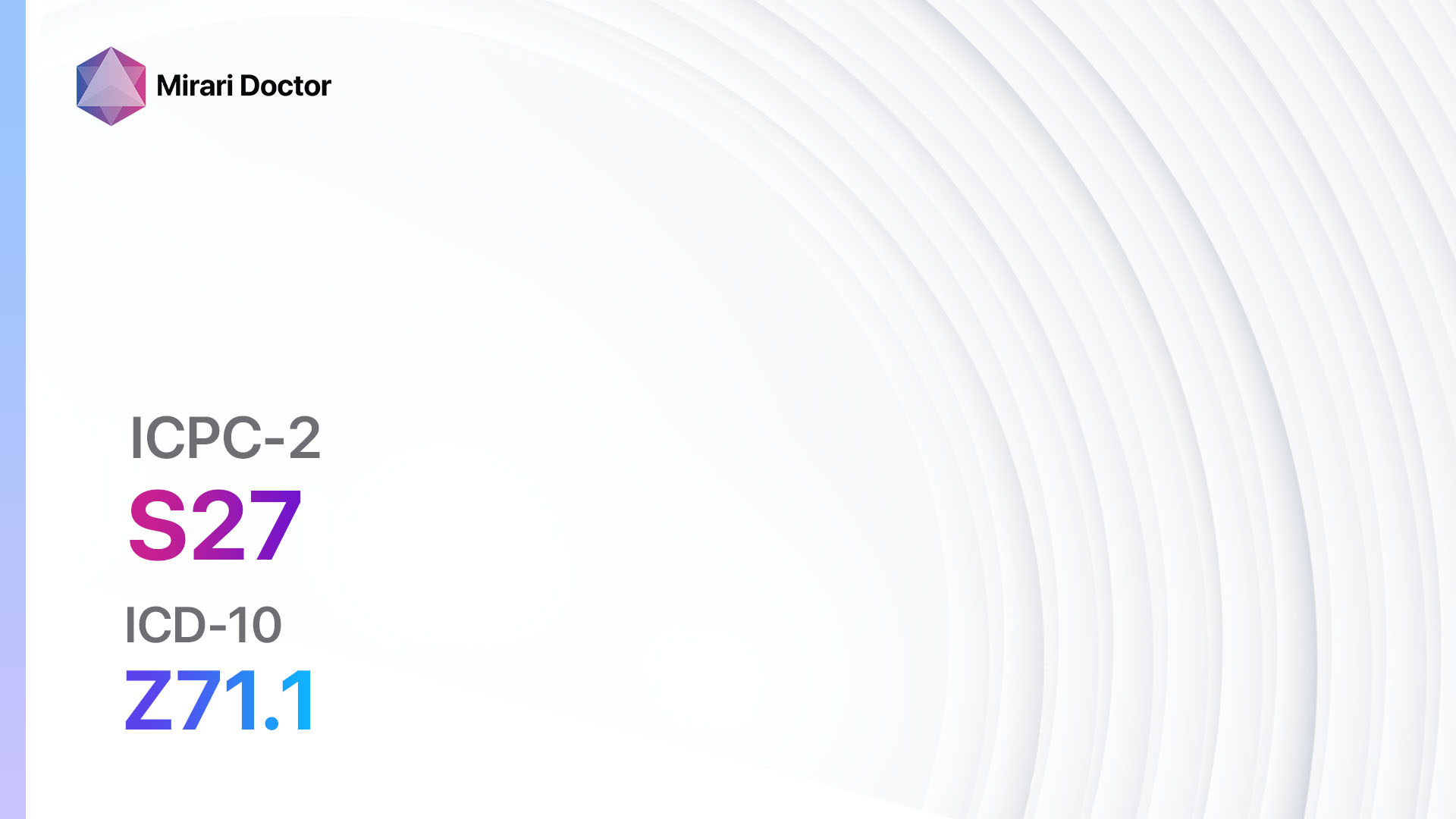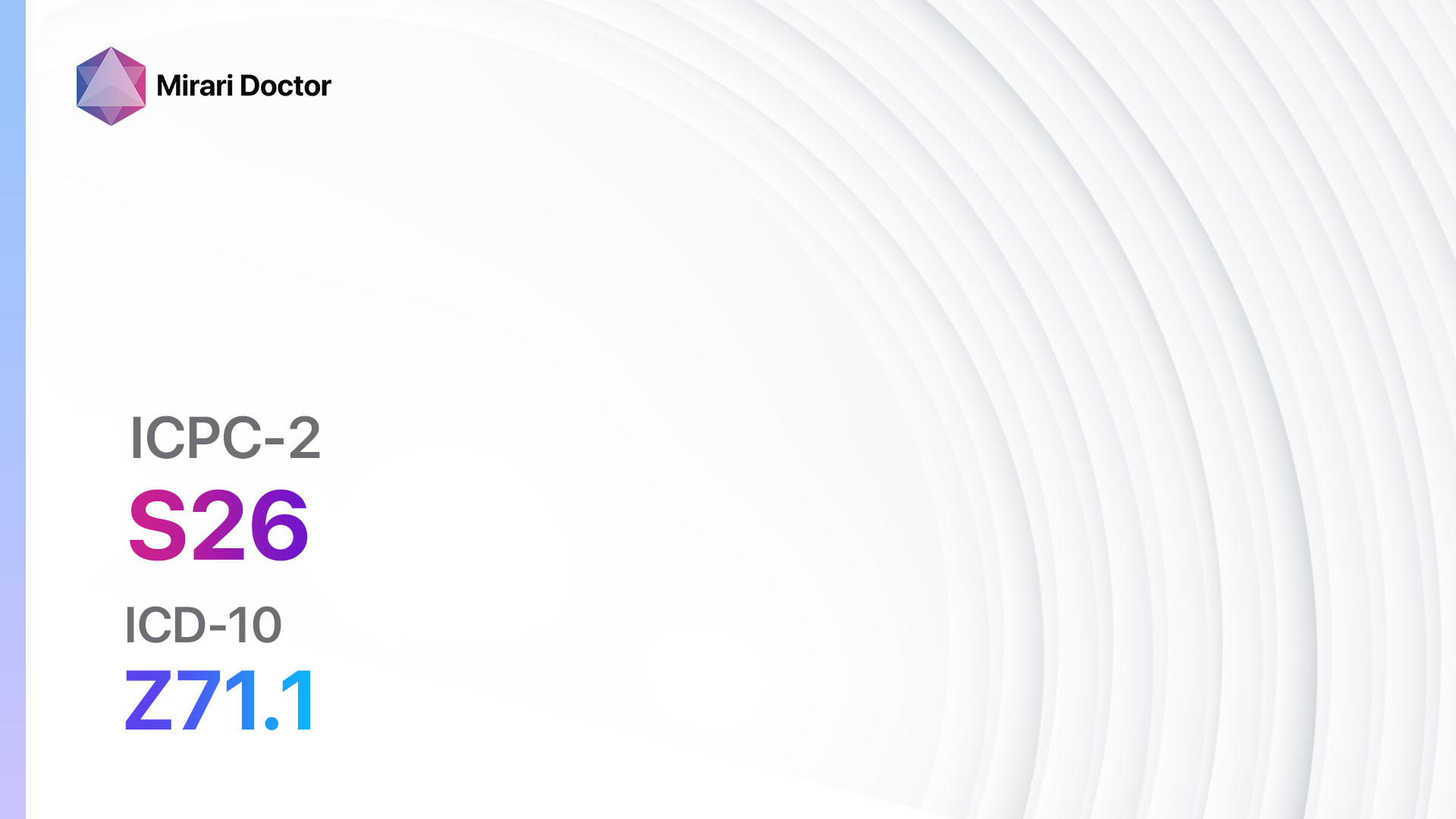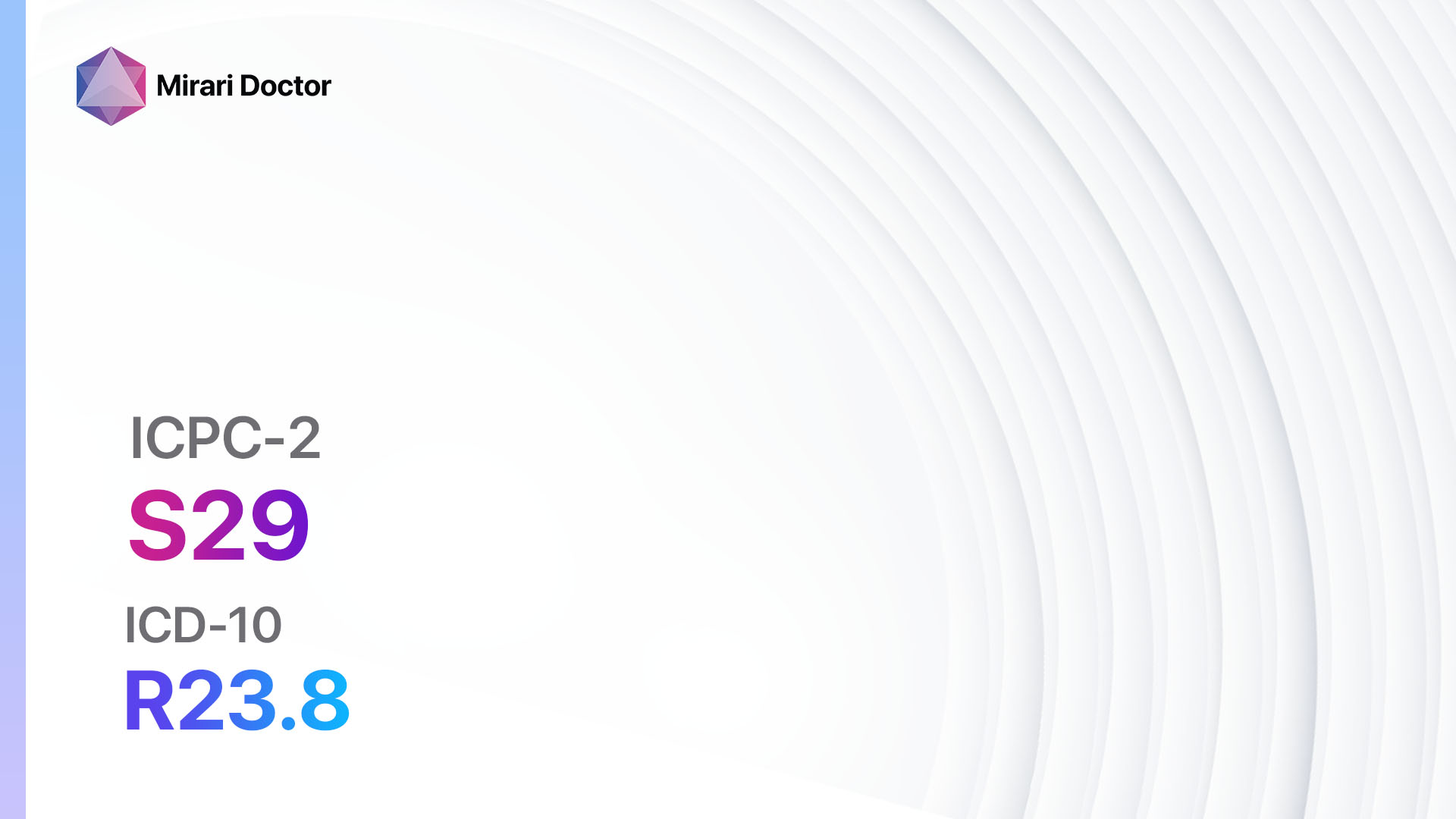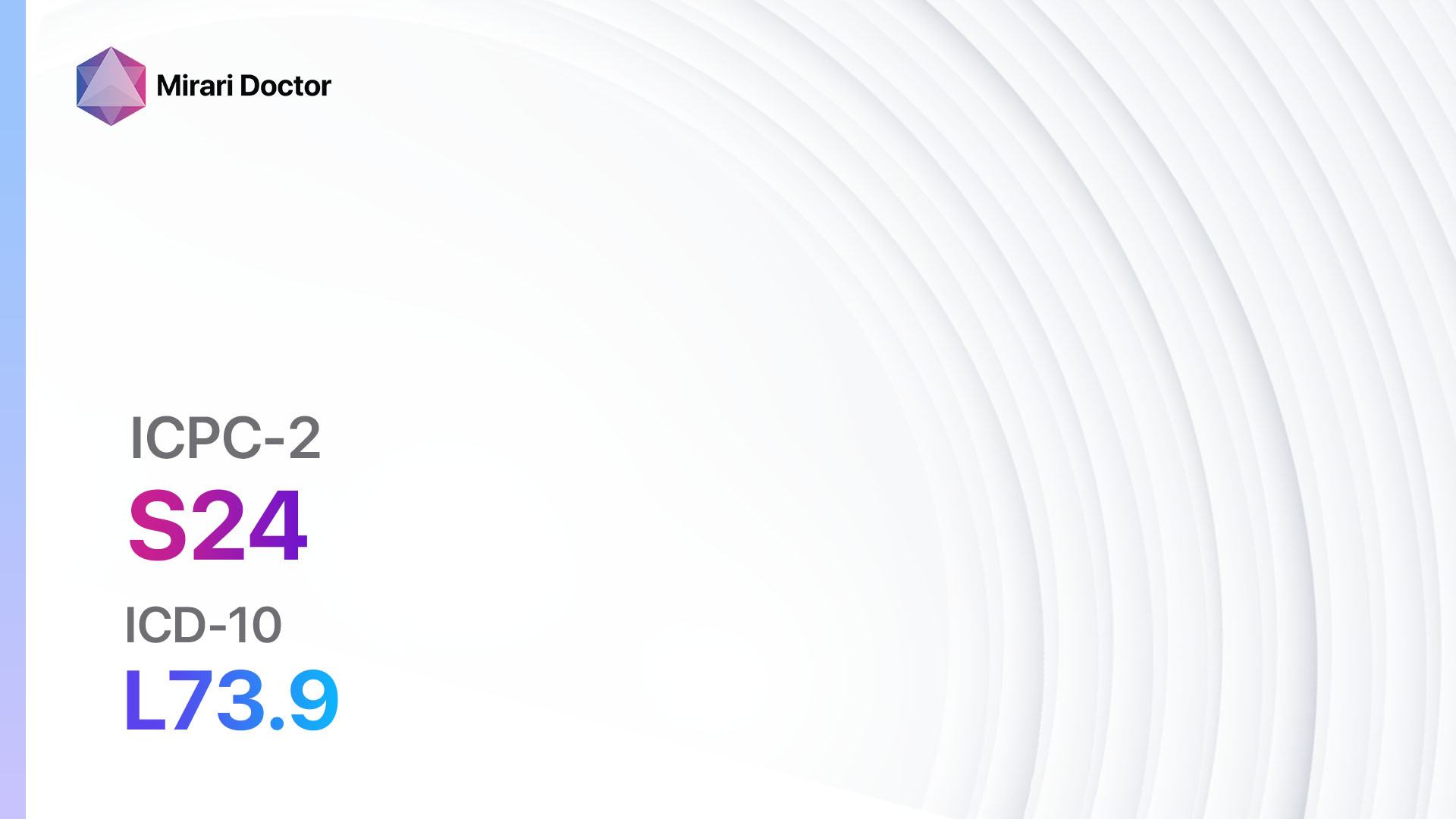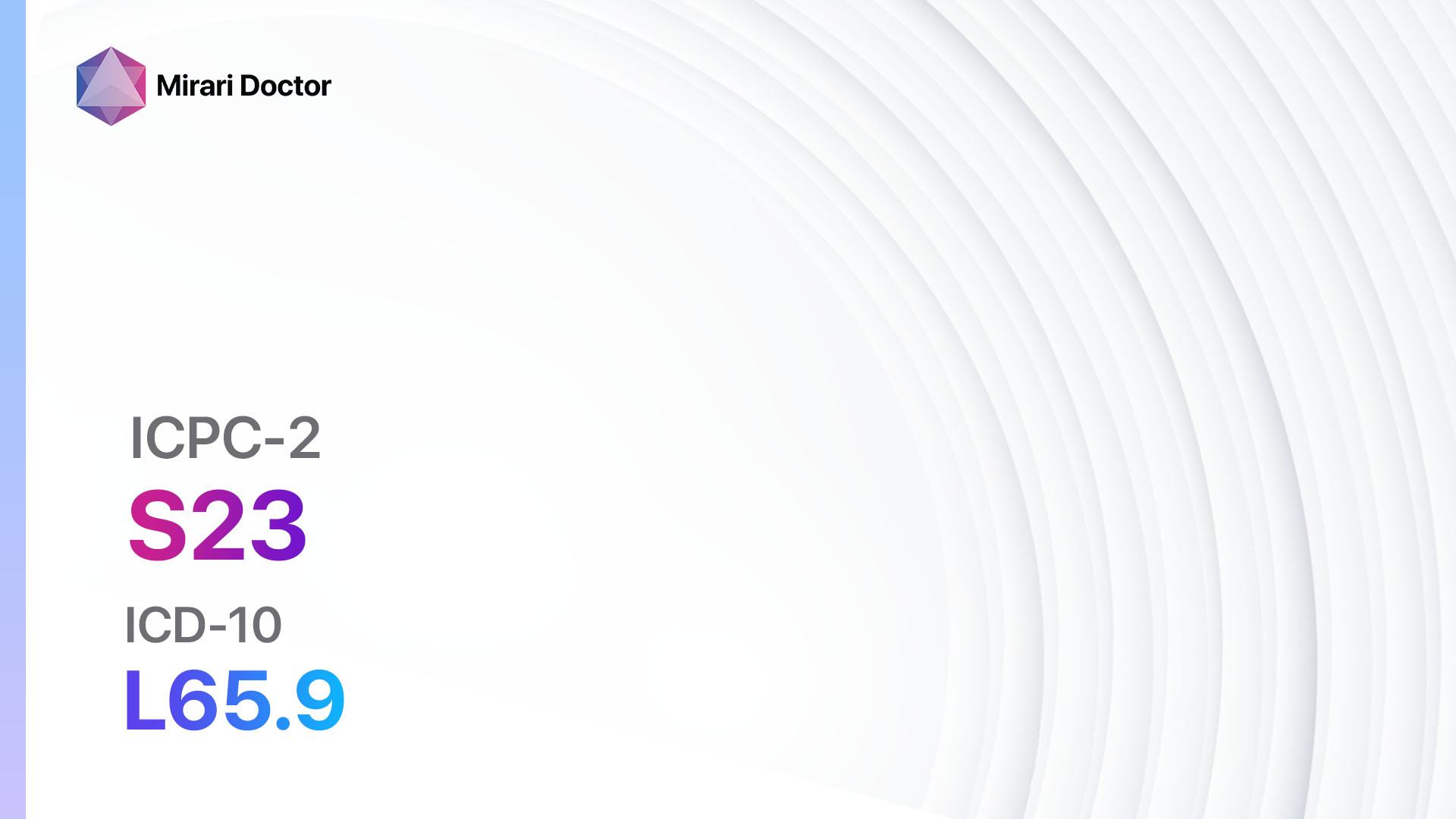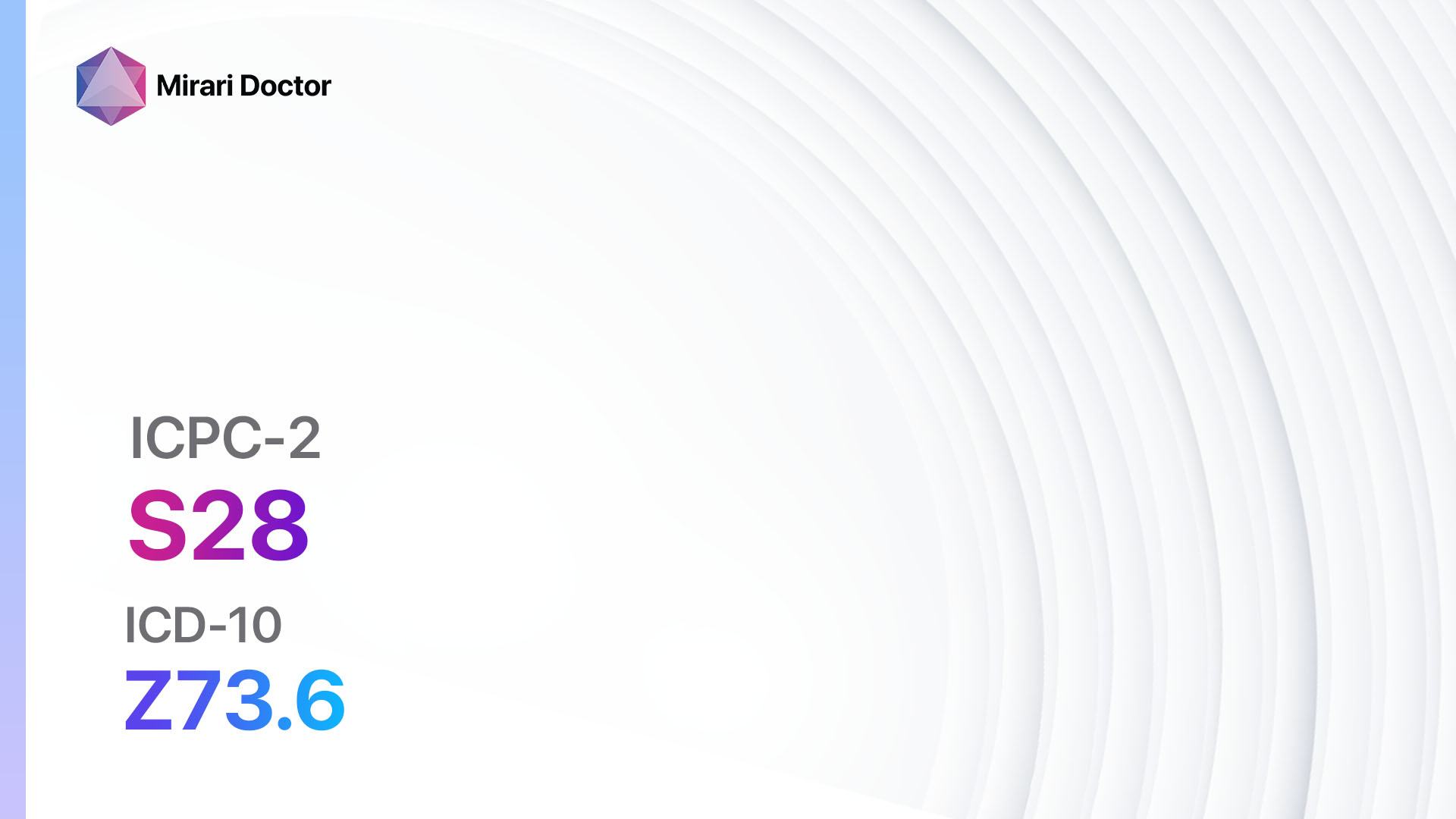
Introduction
Bruises, also known as contusions, are common injuries that occur when small blood vessels near the skin’s surface break and leak blood into the surrounding tissues[1]. They often result from trauma or injury, causing discoloration, pain, and swelling[2]. This guide aims to provide a comprehensive overview of the symptoms, causes, diagnostic steps, possible interventions, and lifestyle interventions for bruise/contusion.
Codes
- ICPC-2 Code: S16 Bruise/contusion[3]
- ICD-10 Code: T14.0 Superficial injury of unspecified body region[4]
Symptoms
- Discoloration: Bruises typically appear as red, purple, or blue patches on the skin[5].
- Pain: Bruised areas may be tender and painful to touch[6].
- Swelling: Inflammation and swelling may occur around the bruised area[7].
- Limited range of motion: Severe bruises may restrict movement in the affected area[8].
- Discomfort: Bruises can cause discomfort or aching sensations[9].
Causes
- Trauma or injury: Bruises commonly occur due to direct impact or trauma to the skin, such as from falls, bumps, or accidents[10].
- Aging: As people age, their skin becomes thinner and more prone to bruising.
- Medications: Certain medications, such as blood thinners or antiplatelet drugs, can increase the risk of bruising.
- Medical conditions: Some medical conditions, like bleeding disorders or vitamin deficiencies, can make individuals more susceptible to bruising.
Diagnostic Steps
Medical History
- Gather information about the patient’s recent injuries or trauma that may have caused the bruise.
- Inquire about any underlying medical conditions or medications that could contribute to bruising.
- Assess the patient’s history of previous bruising episodes or bleeding disorders.
Physical Examination
- Inspect the bruised area for discoloration, swelling, and tenderness.
- Palpate the area to assess for any underlying fractures or deeper tissue damage.
- Evaluate the range of motion and functionality of the affected body part.
Determine Severity
- Classify the bruise based on severity and depth, if applicable:
- Superficial bruise: Limited to the skin’s surface, causing discoloration and tenderness.
- Deep bruise: Involves deeper tissues, potentially leading to more significant pain and swelling.
Laboratory Tests
- Complete blood count (CBC): Assess the patient’s platelet count and overall blood clotting ability.
- Coagulation studies: Evaluate the patient’s blood clotting factors and identify any abnormalities.
- Vitamin deficiency tests: Check for deficiencies in vitamins that play a role in blood clotting, such as vitamin K or vitamin C.
Diagnostic Imaging
- X-ray: Use X-rays to rule out any underlying fractures or bone injuries associated with the bruise.
- Ultrasound: May be used to assess the extent of tissue damage or identify any internal bleeding.
- MRI (Magnetic Resonance Imaging): Utilize MRI to evaluate soft tissue injuries or deeper bruising.
Other Tests
- Biopsy: In rare cases, a biopsy may be performed to rule out other underlying conditions or diseases that may mimic bruising.
- Genetic testing: If a bleeding disorder is suspected, genetic testing may be conducted to identify any inherited abnormalities.
Follow-up and Patient Education
- Provide instructions for at-home care, such as applying ice packs, elevating the affected area, and taking over-the-counter pain relievers.
- Advise the patient on when to seek medical attention if the bruise worsens or if additional symptoms develop.
- Educate the patient on preventive measures to minimize the risk of future bruising, such as wearing protective gear during physical activities.
Possible Interventions
Traditional Interventions
Medications:
Top 5 drugs for Bruise/contusion:
- Acetaminophen (e.g., Tylenol):
- Cost: $5-$15 for a bottle of 100 tablets.
- Contraindications: Allergy to acetaminophen, severe liver disease.
- Side effects: Rare, but can include rash or allergic reactions.
- Severe side effects: Liver damage (rare with recommended doses).
- Drug interactions: Alcohol, certain antibiotics.
- Warning: Do not exceed the recommended dosage.
- Nonsteroidal anti-inflammatory drugs (NSAIDs) (e.g., Ibuprofen, Naproxen):
- Cost: $5-$20 for a bottle of 100 tablets.
- Contraindications: Active peptic ulcer disease, severe kidney disease.
- Side effects: Upset stomach, heartburn.
- Severe side effects: Stomach bleeding, kidney problems.
- Drug interactions: Blood thinners, certain antidepressants.
- Warning: Long-term use may increase the risk of heart attack or stroke.
- Arnica gel or cream:
- Cost: $10-$20 for a tube.
- Contraindications: Allergy to arnica or other members of the Asteraceae/Compositae family.
- Side effects: Rare, but can include skin irritation or rash.
- Severe side effects: Allergic reactions (rare).
- Drug interactions: None reported.
- Warning: For external use only, avoid applying to broken skin.
- Heparin gel or cream:
- Cost: $20-$40 for a tube.
- Contraindications: Known hypersensitivity to heparin.
- Side effects: Rare, but can include skin irritation or rash.
- Severe side effects: Allergic reactions (rare).
- Drug interactions: None reported.
- Warning: For external use only, avoid applying to broken skin.
- Topical analgesics (e.g., Lidocaine gel, Menthol rubs):
- Cost: $5-$20 for a tube or bottle.
- Contraindications: Allergy to lidocaine or menthol.
- Side effects: Rare, but can include skin irritation or rash.
- Severe side effects: Allergic reactions (rare).
- Drug interactions: None reported.
- Warning: For external use only, avoid applying to broken skin.
Alternative Drugs:
- Bromelain: An enzyme derived from pineapples that may help reduce inflammation and promote healing.
- Vitamin K cream: May aid in the healing process by promoting blood clotting and reducing bruise discoloration.
- Witch hazel: A natural astringent that can help reduce swelling and inflammation associated with bruises.
- Comfrey cream: Contains allantoin, which may help reduce pain and inflammation.
Surgical Procedures:
In general, surgical procedures are not typically necessary for the treatment of bruises/contusions. However, if there is an underlying injury or fracture associated with the bruise, surgical intervention may be required. The cost of surgical procedures can vary significantly depending on the specific case and location.
Alternative Interventions
- Acupuncture: May help improve blood flow and reduce pain. Cost: $60-$120 per session.
- Chelation therapy: Controversial treatment involving the administration of chelating agents to remove heavy metals from the body. Cost: $75-$150 per session.
- Hyperbaric oxygen therapy: Involves breathing pure oxygen in a pressurized chamber to increase oxygen delivery to tissues. Cost: $200-$300 per session.
- Herbal supplements: Some herbs, such as arnica or comfrey, may have potential benefits for reducing bruise inflammation and promoting healing. Cost: Varies depending on the specific supplement.
Lifestyle Interventions
- Rest and elevation: Elevating the affected area and getting adequate rest can help reduce swelling and promote healing. Cost: Free.
- Cold compress: Applying a cold compress or ice pack to the bruised area can help reduce pain and inflammation. Cost: Free or minimal cost for ice packs.
- Compression: Using compression bandages or wraps can help reduce swelling and provide support to the bruised area. Cost: Varies depending on the type of compression bandage.
- Nutrition: Consuming a balanced diet rich in vitamins C and K, as well as protein, can support the body’s healing process. Cost: Varies depending on dietary choices.
- Avoiding alcohol and tobacco: Alcohol and tobacco use can impair the body’s healing process and increase the risk of complications. Cost: Varies depending on individual habits.
It is important to note that the cost ranges provided are approximate and may vary depending on the location and availability of the interventions.
Mirari Cold Plasma Alternative Intervention
Understanding Mirari Cold Plasma
- Safe and Non-Invasive Treatment: Mirari Cold Plasma is a safe and non-invasive treatment option for various skin conditions. It does not require incisions, minimizing the risk of scarring, bleeding, or tissue damage.
- Efficient Extraction of Foreign Bodies: Mirari Cold Plasma facilitates the removal of foreign bodies from the skin by degrading and dissociating organic matter, allowing easier access and extraction.
- Pain Reduction and Comfort: Mirari Cold Plasma has a local analgesic effect, providing pain relief during the treatment, making it more comfortable for the patient.
- Reduced Risk of Infection: Mirari Cold Plasma has antimicrobial properties, effectively killing bacteria and reducing the risk of infection.
- Accelerated Healing and Minimal Scarring: Mirari Cold Plasma stimulates wound healing and tissue regeneration, reducing healing time and minimizing the formation of scars.
Mirari Cold Plasma Prescription
Video instructions for using Mirari Cold Plasma Device – S16 Bruise/contusion (ICD-10:T14.0)
| Mild | Moderate | Severe |
| Mode setting: 1 (Infection) Location: 0 (Localized) Morning: 15 minutes, Evening: 15 minutes |
Mode setting: 1 (Infection) Location: 0 (Localized) Morning: 30 minutes, Lunch: 30 minutes, Evening: 30 minutes |
Mode setting: 1 (Infection) Location: 0 (Localized) Morning: 30 minutes, Lunch: 30 minutes, Evening: 30 minutes |
| Mode setting: 2 (Wound Healing) Location: 0 (Localized) Morning: 15 minutes, Evening: 15 minutes |
Mode setting: 2 (Wound Healing) Location: 0 (Localized) Morning: 30 minutes, Lunch: 30 minutes, Evening: 30 minutes |
Mode setting: 2 (Wound Healing) Location: 0 (Localized) Morning: 30 minutes, Lunch: 30 minutes, Evening: 30 minutes |
| Mode setting: 10 (Dermatitis/Fungus) Location: 0 (Localized) Morning: 15 minutes, Evening: 15 minutes |
Mode setting: 10 (Dermatitis/Fungus) Location: 0 (Localized) Morning: 30 minutes, Lunch: 30 minutes, Evening: 30 minutes |
Mode setting: 10 (Dermatitis/Fungus) Location: 0 (Localized) Morning: 30 minutes, Lunch: 30 minutes, Evening: 30 minutes |
| Total Morning: 45 minutes approx. $7.50 USD, Evening: 45 minutes approx. $7.50 USD |
Total Morning: 90 minutes approx. $15 USD, Lunch: 90 minutes approx. $15 USD, Evening: 90 minutes approx. $15 USD |
Total Morning: 90 minutes approx. $15 USD, Lunch: 90 minutes approx. $15 USD, Evening: 90 minutes approx. $15 USD |
| Usual treatment for 7-60 days approx. $105 USD – $900 USD | Usual treatment for 6-8 weeks approx. $1,890 USD – $2,520 USD | Usual treatment for 3-6 months approx. $4,050 USD – $8,100 USD |
 |
|
Use the Mirari Cold Plasma device to treat Bruise/contusion effectively.
WARNING: MIRARI COLD PLASMA IS DESIGNED FOR THE HUMAN BODY WITHOUT ANY ARTIFICIAL OR THIRD PARTY PRODUCTS. USE OF OTHER PRODUCTS IN COMBINATION WITH MIRARI COLD PLASMA MAY CAUSE UNPREDICTABLE EFFECTS, HARM OR INJURY. PLEASE CONSULT A MEDICAL PROFESSIONAL BEFORE COMBINING ANY OTHER PRODUCTS WITH USE OF MIRARI.
Step 1: Cleanse the Skin
- Start by cleaning the affected area of the skin with a gentle cleanser or mild soap and water. Gently pat the area dry with a clean towel.
Step 2: Prepare the Mirari Cold Plasma device
- Ensure that the Mirari Cold Plasma device is fully charged or has fresh batteries as per the manufacturer’s instructions. Make sure the device is clean and in good working condition.
- Switch on the Mirari device using the power button or by following the specific instructions provided with the device.
- Some Mirari devices may have adjustable settings for intensity or treatment duration. Follow the manufacturer’s instructions to select the appropriate settings based on your needs and the recommended guidelines.
Step 3: Apply the Device
- Place the Mirari device in direct contact with the affected area of the skin. Gently glide or hold the device over the skin surface, ensuring even coverage of the area experiencing.
- Slowly move the Mirari device in a circular motion or follow a specific pattern as indicated in the user manual. This helps ensure thorough treatment coverage.
Step 4: Monitor and Assess:
- Keep track of your progress and evaluate the effectiveness of the Mirari device in managing your Bruise/contusion. If you have any concerns or notice any adverse reactions, consult with your health care professional.
Note
This guide is for informational purposes only and should not replace the advice of a medical professional. Always consult with your healthcare provider or a qualified medical professional for personal advice, diagnosis, or treatment. Do not solely rely on the information presented here for decisions about your health. Use of this information is at your own risk. The authors of this guide, nor any associated entities or platforms, are not responsible for any potential adverse effects or outcomes based on the content.
Mirari Cold Plasma System Disclaimer
- Purpose: The Mirari Cold Plasma System is a Class 2 medical device designed for use by trained healthcare professionals. It is registered for use in Thailand and Vietnam. It is not intended for use outside of these locations.
- Informational Use: The content and information provided with the device are for educational and informational purposes only. They are not a substitute for professional medical advice or care.
- Variable Outcomes: While the device is approved for specific uses, individual outcomes can differ. We do not assert or guarantee specific medical outcomes.
- Consultation: Prior to utilizing the device or making decisions based on its content, it is essential to consult with a Certified Mirari Tele-Therapist and your medical healthcare provider regarding specific protocols.
- Liability: By using this device, users are acknowledging and accepting all potential risks. Neither the manufacturer nor the distributor will be held accountable for any adverse reactions, injuries, or damages stemming from its use.
- Geographical Availability: This device has received approval for designated purposes by the Thai and Vietnam FDA. As of now, outside of Thailand and Vietnam, the Mirari Cold Plasma System is not available for purchase or use.
References
- Hoffman, R., Benz, E. J., Silberstein, L. E., Heslop, H., Weitz, J., & Anastasi, J. (2013). Hematology: Basic Principles and Practice (6th ed.). Elsevier Saunders.
- Kaushansky, K., Lichtman, M. A., Prchal, J. T., Levi, M. M., Press, O. W., Burns, L. J., & Caligiuri, M. (2016). Williams Hematology (9th ed.). McGraw-Hill Education.
- WONCA International Classification Committee. (1998). ICPC-2: International Classification of Primary Care (2nd ed.). Oxford University Press.
- World Health Organization. (2019). International Statistical Classification of Diseases and Related Health Problems (11th ed.).
- Buttaravoli, P., & Leffler, S. M. (2012). Minor Emergencies (3rd ed.). Elsevier Saunders.
- Tintinalli, J. E., Stapczynski, J. S., Ma, O. J., Yealy, D. M., Meckler, G. D., & Cline, D. M. (2016). Tintinalli’s Emergency Medicine: A Comprehensive Study Guide (8th ed.). McGraw-Hill Education.
- Hoffman, R., Benz, E. J., Silberstein, L. E., Heslop, H., Weitz, J., & Anastasi, J. (2013). Hematology: Basic Principles and Practice (6th ed.). Elsevier Saunders.
- Kaushansky, K., Lichtman, M. A., Prchal, J. T., Levi, M. M., Press, O. W., Burns, L. J., & Caligiuri, M. (2016). Williams Hematology (9th ed.). McGraw-Hill Education.
- Buttaravoli, P., & Leffler, S. M. (2012). Minor Emergencies (3rd ed.). Elsevier Saunders.
- Tintinalli, J. E., Stapczynski, J. S., Ma, O. J., Yealy, D. M., Meckler, G. D., & Cline, D. M. (2016). Tintinalli’s Emergency Medicine: A Comprehensive Study Guide (8th ed.). McGraw-Hill Education.
Related articles
Made in USA


